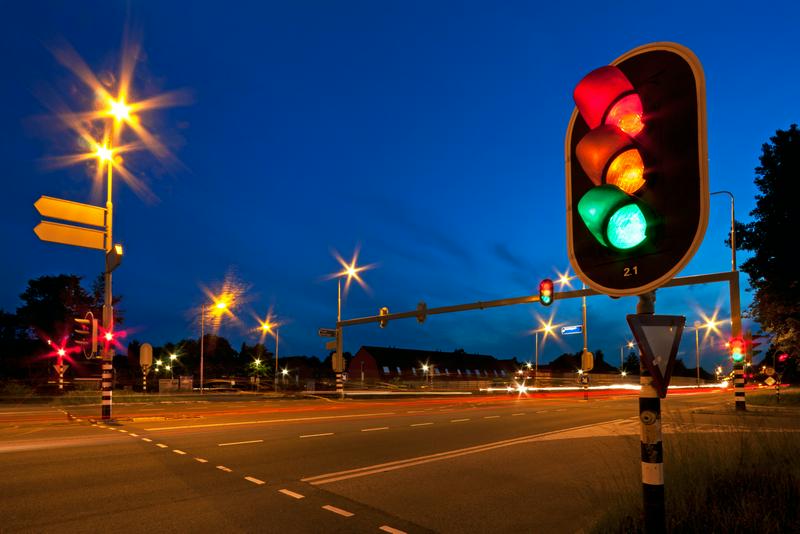Why Does Red Mean “Stop” and Green Mean “Go”? The History of Stoplights
By | April 20, 2022

Everyone, even small children, seems to intuitively know that the color red means “stop” and green means “go.” Today, we may take stoplights for granted—or curse them for slowing us down—but stoplights were an important invention, forever linking these colors with movement.
The First Stoplights
Shortly after the first automobile, there was the first automobile accident. As a preventative measure, many cities and larger towns erected traffic towers at busy intersections, but they were hilariously rudimentary compared to modern stoplights, with traffic officers manually signaling oncoming traffic by flashing different colored lights. It soon became clear that traffic rules needed to be standardized so that drivers would always know which color meant “stop” and which color meant “go," and when picking the colors, traffic officials took a cue from the railroads, which originally featured white lights for "go," green lights for "caution," and yellow lights for "stop" but by that time had adopted the modern color maxim after falling lenses proved the disaster of using white lights for "go." Red just didn't have a "go" feel to it, being the color of blood and panic, so the whole scheme was redone.

Automatic Stoplights
In 1920, a police officer named William Potts developed the four-direction traffic signal, which was installed in Detroit at the intersection of Woodward Avenue and Fort Street. Potts’s invention was well received, but it still required a person to observe the traffic and flip the switches to turn on the colored lights, so as the '20s progressed, clever inventors worked on developing automatic traffic signals. One inventor tried making a signal that changed with sound, featuring a sign instructing drivers to honk their horns as they approached the intersection, but some cars didn’t have horns, sometimes two cars honked at the same time, and mischievous children liked to blow whistles and bang pans to change the signal.
In the end, the most efficient method of automating traffic signals was to set them on a timer. The drawback to this system, of course, is that sometimes cars have to sit and wait for the light to turn green when there were no other cars in the opposite direction, but it was the best solution. By 1935, the Federal Highway Administration officially adopted traffic signals using red, yellow, and green as the standard for all of the nation’s roads.

